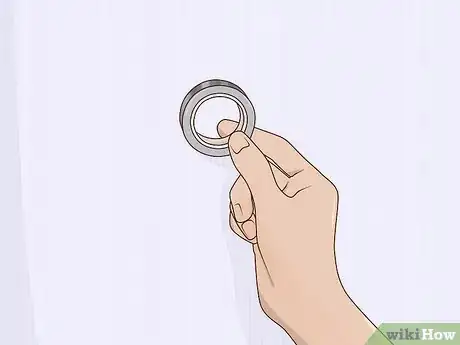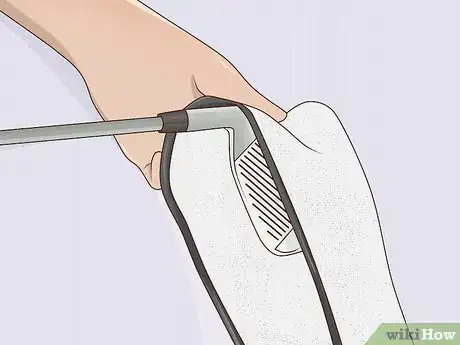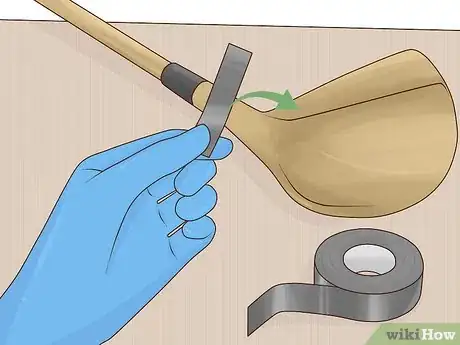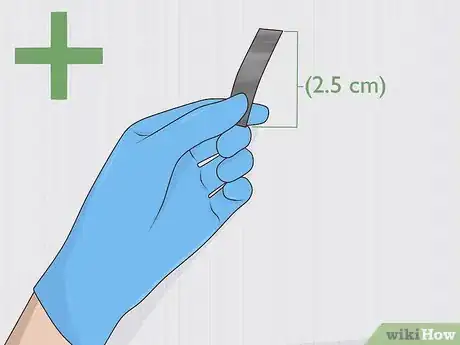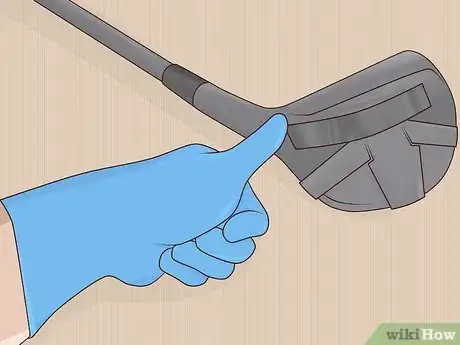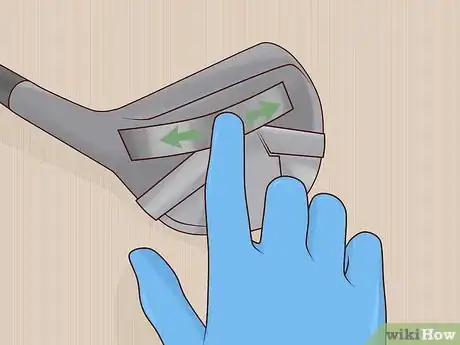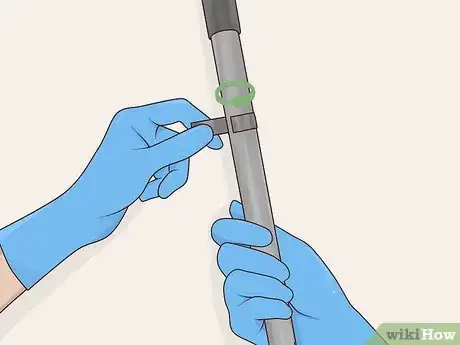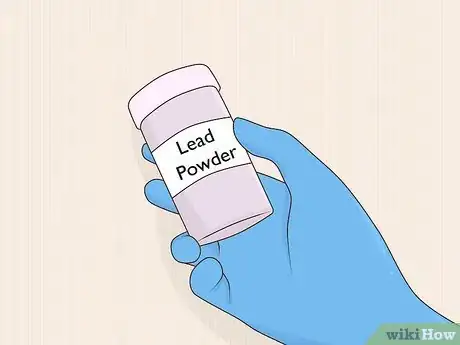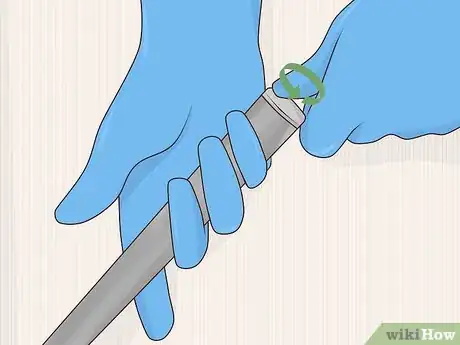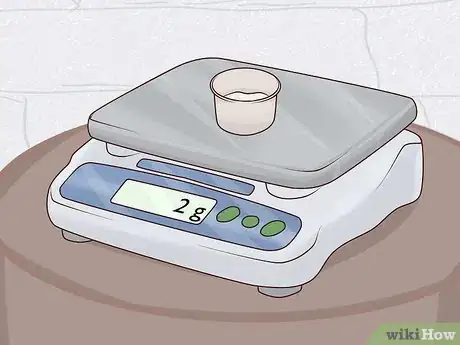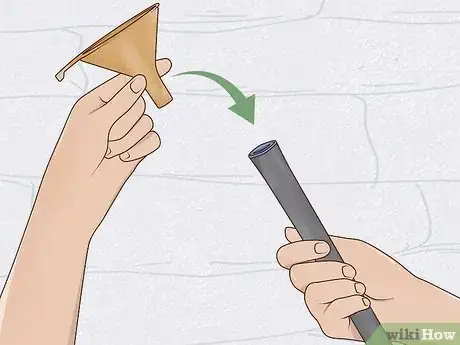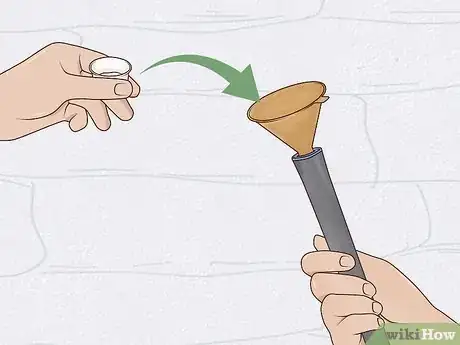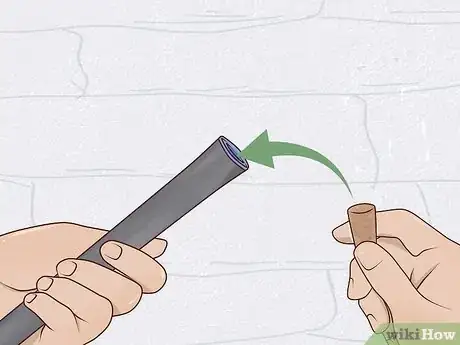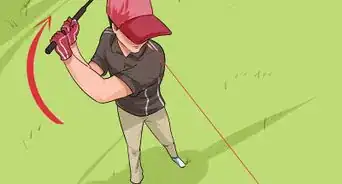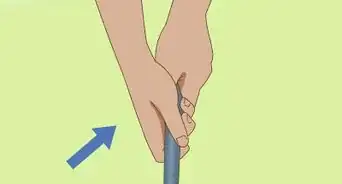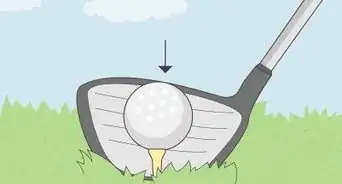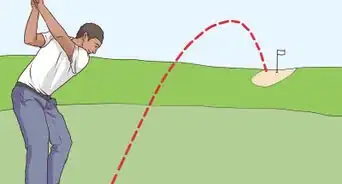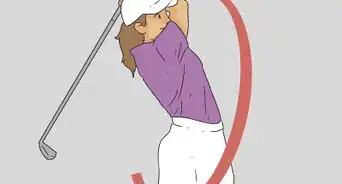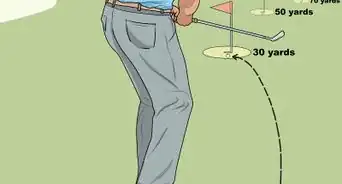This article was co-authored by wikiHow staff writer, Eric McClure. Eric McClure is an editing fellow at wikiHow where he has been editing, researching, and creating content since 2019. A former educator and poet, his work has appeared in Carcinogenic Poetry, Shot Glass Journal, Prairie Margins, and The Rusty Nail. His digital chapbook, The Internet, was also published in TL;DR Magazine. He was the winner of the Paul Carroll award for outstanding achievement in creative writing in 2014, and he was a featured reader at the Poetry Foundation’s Open Door Reading Series in 2015. Eric holds a BA in English from the University of Illinois at Chicago, and an MEd in secondary education from DePaul University.
There are 14 references cited in this article, which can be found at the bottom of the page.
This article has been viewed 8,679 times.
Learn more...
Swing weight refers to the balance and weight of the golf club as you swing it to strike a ball. If you can control a heavier club and hit the ball accurately, a heavier swing weight is preferable to a lighter weight. You may want to add swing weight if the club feels too light when you swing it, or you have excellent club control and can handle some additional weight. The easiest way to add weight is to use lead tape. While the tape may peel off over time, you can always replace it. The other option is to fill the shaft with lead powder. In general, the tape is better if you’re exploring different weight configurations, while the lead powder solution is better if you want to permanently change the weight of the driver.
Steps
Putting Lead Tape on the Driver Head
-
1Buy some 1⁄2 in (1.3 cm) lead tape from your local pro shop. Lead tape is the most popular option when it comes to increasing your swing weight. You can buy it online, but you can also find it from basically any pro shop. You don’t need a ton of it, so pick up a small roll of lead tape that is 1⁄2 in (1.3 cm) wide.[1]
- The tape comes in different sizes, but the 1⁄2 in (1.3 cm) stuff is the most popular for a few reasons. For one, adding 1 in (2.5 cm) of this tape will add 0.5 grams (0.018 oz), which is a nice round number. The other reason is that 1⁄2 in (1.3 cm) tape is wide enough to stay stuck on the driver without peeling off or taking up too much space.
-
2Put some nitrile gloves on to protect your hands from the lead. The tape isn’t dangerous, but it’s better to be safe than sorry. Lead is toxic if you ingest it or it gets absorbed into your skin, so throw on a pair of nitrile gloves to handle it.[2]Advertisement
-
3Clean the driver by wiping it with a damp cloth and drying it. Grab a microfiber cloth and set the driver down flat on a table. Dip the cloth in water and gently rub the head of the driver on each side to remove any surface contaminants. Then, grab a dry microfiber cloth and work it into the grooves of the driver. Continue rubbing your driver head down until it’s completely dry.[3]
- You don’t need to break out the heavy cleaning supplies unless your driver is really dirty. If it is filthy, soak a rag in water and load it up with dish soap. Gently buff the driver to remove the dirt before rinsing it off and letting it air dry.
-
4Put the tape on the back of the club head for the most popular option. Nearly any location on the head of the club is fair game. Use the way the club feels in your hands to determine where you place the tape. Placing tape in the middle of the back of the club head is the most common. This will feel balanced and even while adding the most distance to the ball.[4]
Variations:
Putting the tape on the top of the club will make it easier to control the club with the added weight. It may also lower the ball’s loft when you hit it.You can put tape on the side or end of the head if you want to change the weight distribution.
Putting tape under the head of the driver is the least popular option. It may rub off as your driver hits the grass over time and can make the driver feel unwieldy, but you can do this if you’d like!
-
5Add a 1 in (2.5 cm) piece of tape to add 0.5 grams (0.018 oz). Either measure the amount of weight you want to add to the swing or do this by eye. Pull out a length of tape and use a pair of scissors to clip the tape off of the roll.[5]
- You always use grams when talking about swing weight since this is what the driver weight scale is based on.[6] The scale is kind of complicated, but adding 2 inches (5.1 cm) of tape will typically move the club up 1 letter on the scale, which goes from A0 (lightest) to F9 (heaviest) depending on the length and material.[7]
- Most golfers don’t bother measuring the length of the tape. If you’re unhappy with the weight distribution, you can always peel the strip off and replace the tape.
-
6Press the tape horizontally into the driver’s head to attach it. Take your tape and line it up on your driver. Press one end of the tape against the driver and slowly press the rest of the tape into the driver with your finger.[8]
- Work your way from one end of the tape to the other to avoid leaving air bubbles in the tape.
-
7Smooth the tape down by hand to ensure it doesn’t peel off. Use your finger to really push the tape down to hold it in place. If the tape bends around any edges of the driver, push down especially hard on the corner where the tape bends. Run your finger back and forth over the tape for 10-15 seconds to keep the tape from peeling off in the future.[9]
- You can use a 2-part epoxy to permanently attach the tape to your driver’s head if it starts peeling off over time. Most people don’t want to permanently add weight, though.[10]
-
8Add a small strip of lead tape near the handle if the driver feels unbalanced. Most golfers only put tape on the head, but if the center of gravity feels off, you can add a little tape to the handle to act as a counterbalance. Pull out and cut a piece of lead tape that is no more than half the length of the piece on your driver. Wrap it around the shaft, just underneath the handles. This will balance the weight out a little bit.[11]
- When you add weight to the shaft itself, you’re moving the center of gravity away from the head of the club. This reduces the swing weight, but you may need to compensate a little for the tape on the head if it’s hard to control the driver when you hit balls with it.
Adding Lead Powder to the Shaft
-
1Pick up some lead powder online or at the pro shop. You can pour lead powder inside of your club to increase the swing weight. Stop in at a pro shop or go online and pick up some lead powder. The amount you need depends on how much weight you’re looking to add, so just read the label carefully to determine how much is in the container.[12]
- The lead powder option is much less popular option than the lead tape solution, but some people prefer it because the weight is inside of the club, not sticking on the outside. It does involve messing with the handle, though.
- Unless you plan on touching the lead powder, you don’t really need gloves for this. This entire process can be completed without touching the lead directly.
- You can use tungsten powder instead of lead powder if you prefer. There won’t be any functional difference between them.
-
2Take the grip off or drill a hole into the top of the handle. If you have a removable grip, twist the handle in either direction to slide the grip off of the club.[13] If you don’t have a removable grip, you’ll need to drill a 1⁄2 in (1.3 cm) opening in the top of the club. Use a pilot bit to drill a small hole into the top of the club to puncture the cap and access the hollow opening inside of the club.[14]
- If you can see the seam for the cap on the top of your club, you may be able to twist it off by hand. Some clubs are designed to add weights to the shaft.
- Driver shafts are always hollow, so if you drill in the center of the top, you don’t need to worry about damaging the club.
- This is another reason why this option is less popular with golfers. You’ll need to get the club professionally repaired if you ever want to replace the cap on the top of the club.
-
3Weigh out 2 grams (0.071 oz) of lead powder to move up 1 swing weight size. Grab a small container and set it down on a digital scale. Press the reset button to set the weight back to 0 and add your lead powder. Measure the amount of powder you want to pour into the club. Roughly 2 grams (0.071 oz) will move the club up 1 swing weight size, but you can use another amount if you really prefer.[15]
- The more powder you add, the heavier the swing weight will be.
Tip: The swing weight scale goes from A0, which is the lightest, to F9, which is the heaviest. So if you’re at B4, adding 2 grams (0.071 oz) will move you up to C4. This isn’t important from a player perspective since the weight changes based on how you hold the club and swing, but it can be helpful if you want to make adjustments in the future.
-
4Slide a funnel into the opening of the shaft at the top. Grab a plastic funnel and stick the smaller opening inside of the hole on the top of your club. Brace the club vertically to keep it from falling over while you add your powder.[16]
-
5Pour the lead powder into your shaft. Lift the container off of the scale and slowly pour the lead powder into the funnel. Let the powder rattle all the way down to the base of the club.[17]
-
6Use a cap cork to plug the opening at the top or attach a new grip. To keep the powder from sliding out, reinstall the grip or cap if you removed it from the shaft. If you drilled into the club, buy a cap cork at a pro shop or online to fit the opening of your shaft. Slide the cork into the opening and use a ramrod or long stick to push the cork down into the shaft.[18]
- The hollow opening inside of the shaft is tapered. It’s wider at the top, so pushing the cork down will force it into the shaft and keep it from coming loose.
- Most golfers that do this leave the cap open up top, but you can rewrap the handle if you want to cover it up.
Things You’ll Need
Putting Lead Tape on the Driver Head
- Nitrile gloves
- Lead tape
- Microfiber cloth
- Scissors
Adding Lead Powder to the Shaft
- Lead powder
- Funnel
- Scale
- Drill (optional)
- Drill bit (optional)
- Cap cork (optional)
- Ramrod (optional)
References
- ↑ https://golftips.golfweek.com/add-weight-golf-driver-20369.html
- ↑ https://www.golf.com/gear/accessories/2019/08/09/lead-tape-golf-how-to-use-it/
- ↑ https://www.golfmagic.com/equipment-news/we-asked-500-golfers-how-often-they-clean-their-golf-clubs
- ↑ https://golftips.golfweek.com/add-weight-golf-driver-20369.html
- ↑ https://www.golf.com/gear/accessories/2019/08/09/lead-tape-golf-how-to-use-it/
- ↑ https://youtu.be/1rRp8FIgH1o?t=134
- ↑ https://golftips.golfweek.com/swing-weight-golf-clubs-1737.html
- ↑ https://youtu.be/1rRp8FIgH1o?t=80
- ↑ https://youtu.be/1rRp8FIgH1o?t=93
- ↑ https://youtu.be/jFaxg3Xbm-I?t=68
- ↑ https://www.golf.com/gear/accessories/2019/08/09/lead-tape-golf-how-to-use-it/
- ↑ https://youtu.be/z6JKjHc35vY?t=27
- ↑ https://youtu.be/xyqTVicLsVc?t=31
- ↑ https://youtu.be/z6JKjHc35vY?t=58
- ↑ https://youtu.be/z6JKjHc35vY?t=88
- ↑ https://youtu.be/z6JKjHc35vY?t=126
- ↑ https://youtu.be/z6JKjHc35vY?t=126
- ↑ https://youtu.be/z6JKjHc35vY?t=231
- ↑ https://golftips.golfweek.com/add-weight-golf-driver-20369.html
